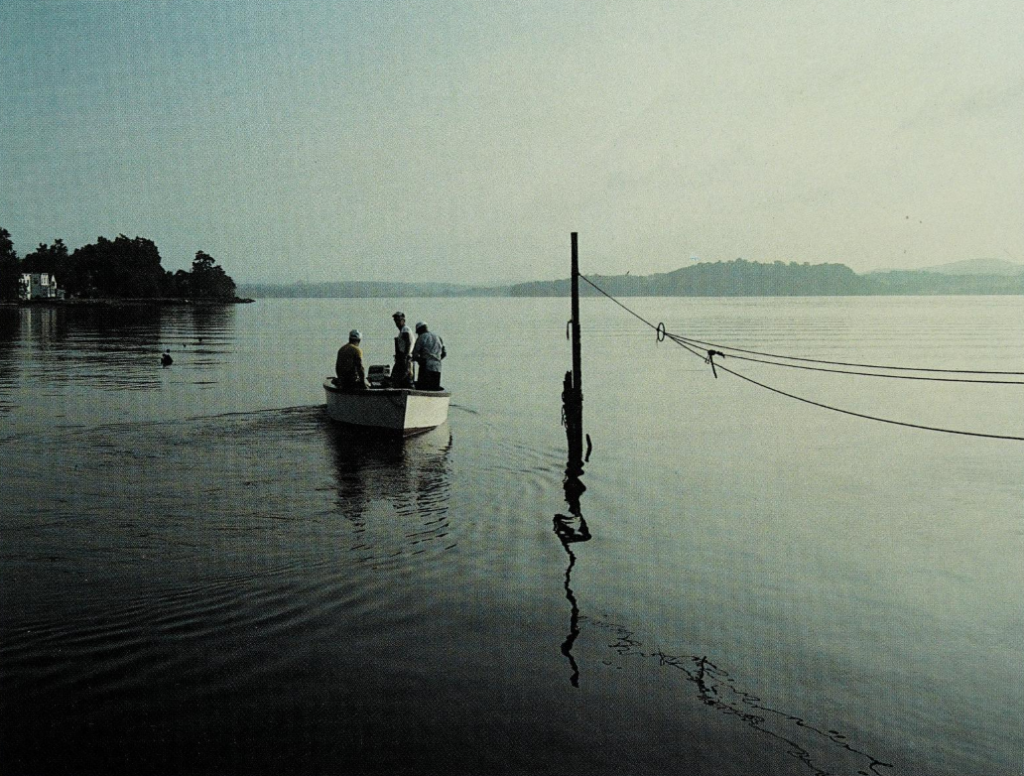Hudson River fishermen heading out at dawn, Peter Lourie, 1998
Last February 2020, I visited the Constitution Marsh Audubon Center and Sanctuary Trail in the Hudson River to make some field recordings of the environment surrounding the brackish tidal marsh. The Constitution Marsh is one of five large estuarine environments connected to the Hudson River and provides natural habit to several species of birds, fish, plants, and many vertebrate and invertebrate species. This wetland area is located on the east side of the Hudson, near Cold Spring, and is surrounded by the Hudson Highlands.

Tidal Marsh, Hudson River, 10’20”, Feb 2020, download
The soundscape above was recorded on a small hill overlooking the tidal marsh. It was a very windy day, so I sheltered the microphone between the rocky steps of the trail. The resulting recording captures the sounds of branches and dry leaves rustling in the wind, bird calls, and the sound of the Amtrak train on the distance with its characteristic horn. The marsh provides foraging, nesting, and resting habitat to more than 200 species of birds. However, this New York State Bird Conservation Area is still subject to a large conglomeration of human-made noises like the train and low flying airplanes.

Inside a hollow tree, 2’14”. Feb 2020, download
The more pervasive sound in the area is the constant sound of airplanes. I tried to record the sound of a passing aircraft through the vibrating trunk of a tree by placing a microphone inside of a hollow tree. The airplane’s sound reverberating on the wooden walls resulted in an eerie drone sound.
Reeds, Water and Wind, 2’08”. Feb 2020, download
Phragmites australis, the common reed, is a non-native marsh plant spreading in many of the Hudson River wetlands. This plant forms fast-growing stands of stems, transforming the diversity of the habitat into a monoculture by crowding out native vegetation. Reeds introduce changes to the local microtopography, increase fire potential, decrease salinity, and outcompete plants. These changes have a ripple effect that ends up degrading the diversity of wetlands and coastal marshes and endangering wildlife. The Constitution Marsh Audubon Center dedicates its conservation efforts to the control and management of reeds in the area by using black geotextile material to flatten and cover patches of the vegetation. This method raises the temperature of the soil, killing the root system of the plant, allowing for the future growth of native vegetation.
Small brook flowing into the tidal marsh, Hudon River, 2’08”. Feb 2020, download
Carlo Patrão
*photos by the Constitution Marsh Audubon Center

